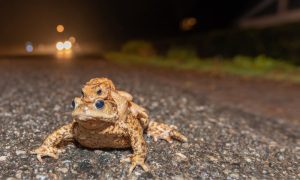Research shows that different species of animals might understand and employ each other’s ways of communication, as reported by Live Science.
Instead of focusing on human ideas of “language,” some scientists are emphasizing the physical and vocal behaviors animals use to communicate, such as elephants flapping their ears to greet each other.
“Language is kind of a species-specific communication system to humans,” stated Simon W. Townsend, a professor of evolutionary anthropology at the University of Zurich.
A new study on inter-species social interactions found that migrating songbirds might recognize calls from different bird species when migrating at night.
Another example is the fork-tailed drongo, a bird from Africa who tricks meerkats into leaving their food by mimicking calls that suggest a predator is nearby. When meerkats caught on to this trick and started ignoring the drongos, the drongos imitated other birds’ alarm calls or even mimicked meerkats’ alarm call to keep tricking them. The scientist who conducted this study is still trying to determine whether drongos are intentionally being deceptive or have simply learned that certain sounds lead to them getting food.
This type of research has the potential to enhance human understanding of animals as sentient beings. We hope to see more studies that expand our knowledge of their communication methods, which will hopefully allow us to understand them better.







